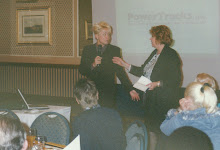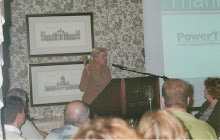At a store the other day, I saw a commercially packaged St. Joseph’s statue that promises to have property sell fast when the statue is buried in the ground outside. Having a (lovely, like brand-new) townhouse for sale at the moment, in another state, and with ‘nary a bite, seeing the statue at the store had me considering if its power is real (and if I should buy it). I’d heard the tales but have never seen any proof. It didn’t escape me, however, to think how the planting of a St. Joseph’s statue in the yard is a lot like intention but with a dose of divine intervention.
We’ve all been there, when what we’re sellin', just ain’t movin’and divine intervention is about the only thing that will help. So, we hustle a little bit more, convinced that if we just keep putting “it” out there, “it” will finally arrive. Still, nada. At that point, I think a lot of people give up. They take jobs that aren’t right for them, they drop out of school convinced a degree won’t make any difference … they flat out stop intending.
If you aren’t aware of the story behind the discovery of King Tut’s tomb, pay close attention. Five years of work in the Valley of Kings in Egypt had netted archeologist, Howard Carter, absolutely nothing despite his unwavering belief that he was close to finding the tomb. It was not until his final season that he happened upon one of the world’s greatest archeological treasures – the intact tomb of King Tutankhamun. The moral of the story here, of course, is that if you stay on track and keep your intentions focused, while understanding that not everything happens when you want, the pay-off may be much greater than even you had expected. Perhaps I shouldn’t lower the price on that townhouse just yet.
Executive Onboarding Note: The Importance Of The Confidence To Be Open To
Help
-
While executive onboarding, get help. If it’s offered, take it. If it’s not
offered, find it.
The post Executive Onboarding Note: The Importance Of The C...
7 years ago



